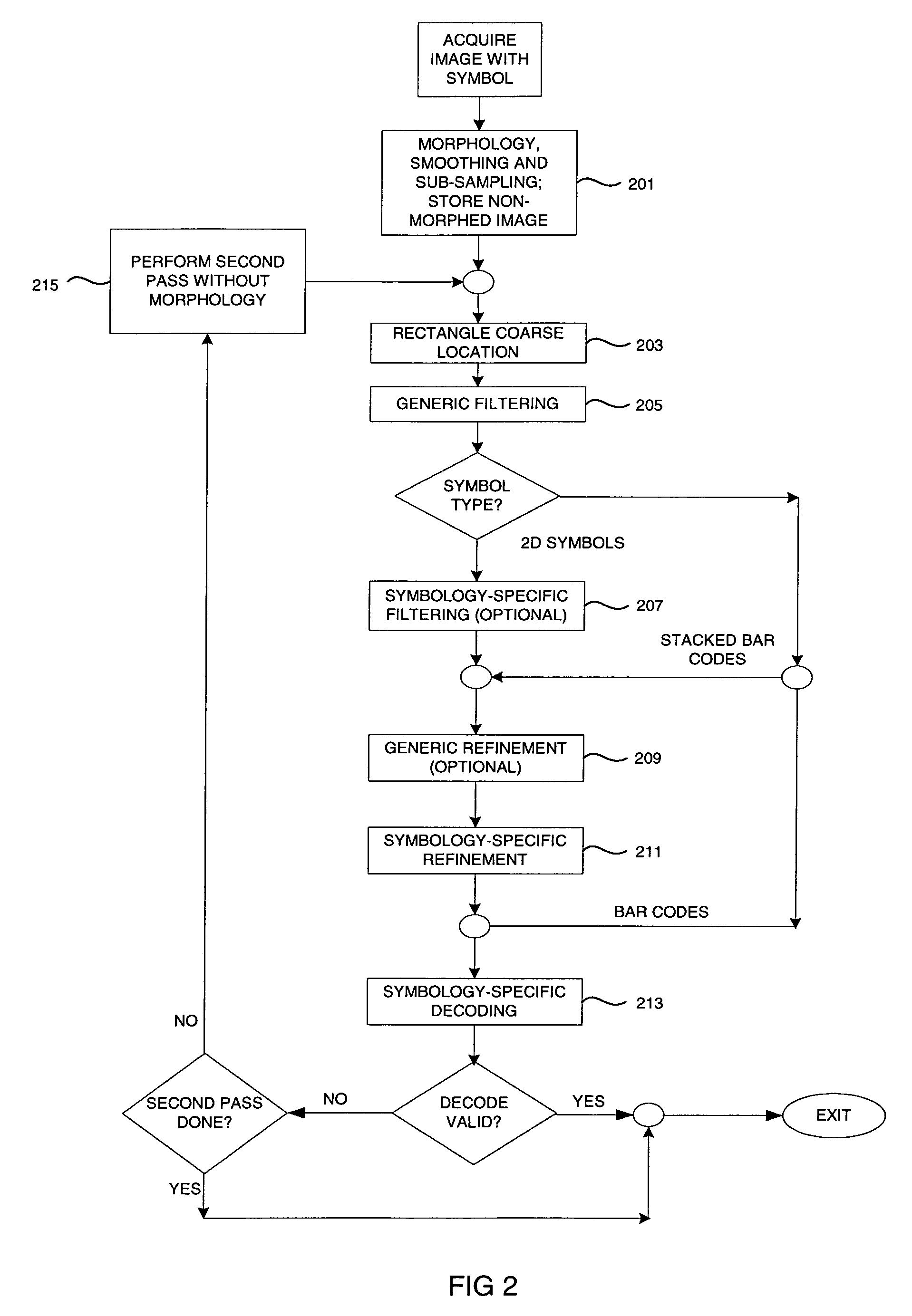Method and apparatus using intensity gradients for visual identification of 2D matrix symbols
a technology of intensity gradients and matrix symbols, applied in the field of industrial vision systems, can solve the problems of increasing the delay and potential human errors of recalibrating for each run, requiring operator intervention, and reducing the reliability of so as to increase reliability and throughput, accurate locating the encoded symbol matrix
- Summary
- Abstract
- Description
- Claims
- Application Information
AI Technical Summary
Benefits of technology
Problems solved by technology
Method used
Image
Examples
Embodiment Construction
[0026]The apparatus and method according to the invention perform a flexible image analysis for robust decoding of symbolic data. As shown in FIG. 1, digitized images are acquired 101, pre-processed 103 to create a morphology image, and a first pass is made 105 to decode the symbol data. If the output data is not valid 107, a second pass is made 109 without the morphology, and the output data is again evaluated 111.
[0027]As shown in FIG. 2, during each pass, after preprocessing 201, a coarse symbol location is found 203, and its data is filtered 205. Then, depending upon the selected symbol type, additional symbol-specific filtering 207 and generic refinement 209 and / or symbology-specific refinement 211 are imposed, if necessary. If the data cannot be decoded as valid 213, then the non-morphed image is retrieved 215 and another pass is made, resulting in either a valid decode or a failure result.
[0028]The image acquisition step 101 can be accomplished using apparatus and methods kno...
PUM
 Login to View More
Login to View More Abstract
Description
Claims
Application Information
 Login to View More
Login to View More - R&D
- Intellectual Property
- Life Sciences
- Materials
- Tech Scout
- Unparalleled Data Quality
- Higher Quality Content
- 60% Fewer Hallucinations
Browse by: Latest US Patents, China's latest patents, Technical Efficacy Thesaurus, Application Domain, Technology Topic, Popular Technical Reports.
© 2025 PatSnap. All rights reserved.Legal|Privacy policy|Modern Slavery Act Transparency Statement|Sitemap|About US| Contact US: help@patsnap.com



